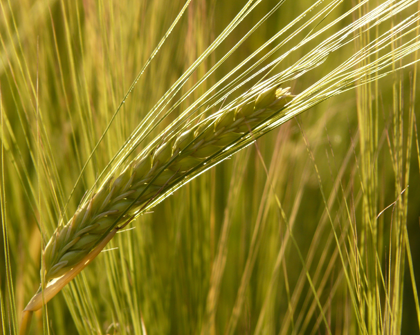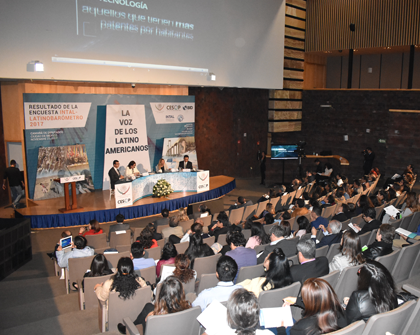The elimination of subsidies to agricultural exports that was established at the last WTO Conference in Nairobi (December 13–16, 2015) is a significant step towards reducing the competition that developing countries face in global trade, however, progress is yet to be made on the elimination of other barriers to trade. In this sense, this article briefly introduces some of the trade policy tools that the European Union (EU) is using in the agricultural sector.
EU tariffs are somewhat higher in the agricultural sector in relation to other sectors, and they include tariff peaks, tariff escalation, and seasonal tariffs. However, the average MFN tariff is relatively low and many tariff lines are duty-free.
The measures that the EU uses to regulate trade in goods, fundamentally agricultural goods, include tariffs, tariff quotas, antidumping and countervailing measures, sanitary and phytosanitary barriers, technical regulations and standards, and environmental protection measures. The following section describes each of these trade regulation modalities in detail.
The EU’s tariff structure includes non-ad-valorem tariffs (specific or compound), seasonal duties, and tariff peaks and escalation, which mainly affect the agricultural sector.
The average MFN tariff is 6.4% (which includes the ad-valorem equivalents [AVEs] of non-ad-valorem tariffs). However, the average tariff rate for agricultural products is significantly higher (14.4%) than that for non-agricultural products (4.3%).
Furthermore, 10.6% of tariff lines are subject to non-ad-valorem tariffs, which mainly affect agricultural products (46.5 of tariff lines in the sector). A quarter of all tariff lines are duty-free, while 8.5% are subject to MFN tariffs that are higher than 15%, which is considered to be a tariff peak. On average, non-ad-valorem tariffs continue to lead to higher levels of protection than ad-valorem ones. Ad-valorem tariffs stand at between 0% and 75%; however, if non-ad-valorem tariffs are also taken into account, AVEs may reach 635.4%. All cases of AVEs greater than 100% correspond to agricultural products and are applied to products including whey (635.4%), prepared or preserved poultry meat (288.9% and 143.2%, respectively), prepared or preserved mushrooms and truffles (183.5% and 159.5%, respectively), live poultry (156.4%), isoglucose (119.7%), and grape juice (116.2%).
Applied EU MFN Tariff by Product Group
In %
Source: WTO Trade Policy Review: European Union, May 2015.
Furthermore, imports of agricultural products are subject to complex tariff structures, such as entry prices and the Meursing Table. Applying these entry prices is a price control measure that is used for certain fruits and vegetables (tomatoes, cucumbers, courgettes, artichokes, citrus fruits, grapes, apples, apricots, peaches, plums, and cherries, among others). For some products, entry prices (seasonal tariffs) vary throughout the year, and are higher during the European growing season and lower outside of this. This system works such that when the import price for a product is greater than the entry price calculated by the EU, an ad-valorem tariff is applied. In contrast, when the customs valuation is lower than the entry price, in addition to the ad-valorem tariff, a specific tariff is applied that varies according to the import price. This measure makes EU products more competitive than those from outside the bloc.
In turn, the Meursing Table consists of applying import duties that vary depending on product composition. These tariffs are determined by the product’s fat, protein, starch, and sugar content, which translates into over 20,000 possible tariff combinations and makes it extremely difficult for exporters to determine the tariff that the EU importer should pay.
Finally, the EU grants tariff quotas to agricultural products that it produces insufficient quantities of. This measure contemplates total or partial exemption from customs duties that are applicable to goods imported in limited quantities, or the application of specific tariffs. Some 5% of total tariff lines (both agricultural and non-agricultural) are affected by this measure. Tariff quotas allow European companies to obtain such products at a lower cost while the measure is in force, which improves their competitiveness.
Subsidies
The EU’s Common Agricultural Policy (CAP) was created to abolish national mechanisms of intervention that were incompatible with the common market and make them applicable at the EU level. By so doing, agricultural products were included in the free movement of goods. Intervention in the agricultural sector is justified by systemic imbalances between supply and demand, and thus by the extreme volatility of prices and incomes (European Parliament).
Multiannual Financial Framework of the EU, 2014–2020: Planned Commitments
Source: Common Agricultural Policy of the EU, European Commission.
Through the CAP, the EU promotes production and exports. The new Multiannual Financial Framework (2014–2020) establishes a total budget of €373.17 billion at 2011 prices, equivalent to 38.9% of the 28-member bloc’s global commitment appropriations. The regulation of agricultural markets and direct payments represent 28.9% of the total planned commitments, while rural development measures represent 8.8%. In this way, the planned agro-rural budget for 2020 stands at €49 billion, the equivalent of 34.9% of the total budget. This assistance, which is implemented during the primary phase of the production process, is transferred to final food prices, which helps keep end prices down and hinders the entry of competitors from outside the EU. At the same time, the modification of conditions of competition in third-party markets affects external sales from other countries that compete with EU exporters. Some of the products from Latin America and the Caribbean that are affected by EU domestic support are cereals, oilseeds, beef and veal, and milk and milk products (Argentina’s Ministry of Foreign Affairs and Worship, 2013).
Trade Defense Policies
Trade defense measures are one of the EU’s key instruments. The European Community is one of the main users of this type of tool. At the end of 2014, the EU had 108 antidumping measures in force and 14 countervailing measures which affected 27 trading partners. One example of this type of measure is the antidumping duty that the EU established for biodiesel from Argentina. For more information, see the recent article Ruling on Biodiesel in Favor of Argentina in INTAL Connection 235.
Sanitary and Phytosanitary Measures
To have the right to export live animals or animal products to the EU, the relevant authority in the exporting country needs to have been formally recognized by the European Commission as being capable of carrying out reliable inspections and controls throughout the production chain, covering all aspects related to hygiene, animal welfare, and public health. In the case of certain food products that may pose a risk to public health (such as meat and fishery products), the European Commission must approve of the exporter country’s waste control program, the measures it takes to prevent salmonella in poultry and poultry products, and other requirements, depending on the animal or product in question.
In contrast, almost all plant products from most countries do not require prior approval or notification, although they must comply with food safety and customs inspection standards.
Regarding Pesticide Residues in Human Food and Animal Feed, the EU applies the “precautionary principle,” which in some cases can be a barrier to trade.
Technical Standards and Trade
In addition to tariff barriers, certain other standards and technical rules of trade are becoming increasingly important. These measures can be adopted by governments in order to “protect human, animal or plant life or health,” provided that they do not lead to arbitrary or unjustifiable discrimination (GATT Article XX and specific WTO agreements).
To protect consumer rights, products imported into the EU must fulfill specific requirements. The main such requirements are product safety, technical standardization, packaging, and labeling. There are different regulations that limit the use of traditional terms for wine products (such as “premium,” “reserve,” or “matured”), the regime for recording, evaluating, authorizing, and restricting certain chemical additives (REACH), and some animal welfare standards, which complicate trade in these products.
Furthermore, the EU reserves the right to the special safeguards for agriculture (SSG) mechanism contained in Article 5 of the WTO’s Agreement on Agriculture for 539 tariff lines, which represent over 25% of its agricultural lines. This measure contemplates products such as fruits and vegetables, poultry products, sugar, meats, milk products, and cereals.
Environmental Measures
The environmental measures that affect trade enjoy a high level of legitimacy but, at the same time, their use may be more discretionary. Examples of this type of measure include environmental labeling in general, and decisions related to the European biofuels market.
Likewise, a product’s environmental footprint contemplates not only greenhouse gas emissions—known as the “carbon footprint”—but also impacts on biodiversity, natural resources, and the use and management of water, among other factors. The EU is developing a methodology to calculate this—the Product Environmental Footprint (PEF)—which includes the carbon footprint, and is carrying out pilot tests for Product Environmental Footprint Category Rules (PEFCRs), in which mainly European companies and producer organizations are taking part. The results of this process will lead to valid product rules for the environmental footprint of EU products to be used throughout the bloc. This will undoubtedly affect exports of food products to the EU (CEI, 2016).
Conclusions
Historically, tariffs on agricultural products in the EU have been higher than on industrial goods, and although the gap has been narrowing, it remains high.
When it comes to analyzing European agricultural policy, it is essential to bear in mind the fact that the bloc applies both tariff and non-tariff measures (sanitary and phytosanitary and environmental measures, technical barriers, and antidumping and countervailing measures, among others). As described in this article, the latter give the greatest degrees of freedom when they are applied.
Bibliography
CEI. 2016. “La huella ambiental de la UE y sus posibles impactos comerciales para los productos alimenticios de exportación de la Argentina [The EU environmental footprint and the possible commercial impacts it may have on exports of food products from Argentina].” February.
Conte Grand, Mariana, and D’Elia, Vanesa. 2015. “Environmental Protectionism. How European Restrictions Affect Trade,” in: Integration and Trade No. 39. Buenos Aires: IDB/INTAL.
Institute for the Integration of Latin America and the Caribbean (INTAL). 2016. “Ruling on Biodiesel in Favor of Argentina,” in: INTAL Connection 235.
———. 2016. “The WTO after Nairobi: The Future of Agricultural Negotiations,” in: INTAL Connection 235.
Argentine Ministry of Foreign Affairs and Worship. 2013. “Impacto del Proteccionismo Europeo sobre la Economía Argentina [The impact of European protectionism on the Argentine economy].” November.
WTO. 2015. “WTO Trade Policy Review: European Union.”
European Parliament. 2016. La política agrícola común (PAC) y el Tratado [The Common Agricultural Policy (CAP) and the treaty]. Albert Massot.




